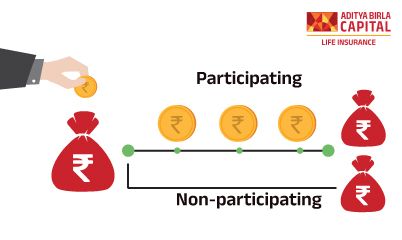Aditya Birla Sun Life Insurance Company Limited
Are You Financially Ready For Different Life Goals?

Plan Smarter, Live Better!

Thank you for your details. We will reach out to you shortly.

Currently we are facing some issue. Please try after sometime.


- Table of Contents
When you take away all the complex layers, personal finance is all about two basic things.
-
How you bring in the money
-
And how you use that money
Sounds simple, right? Putting this into practice is a little bit more complex. Most people get the first part right. Earning money - that's what your school, your college and internships all prepare you for.
But what about the rest of it? What about what you do with the money you've earned? That's the part that most people are unprepared for. Simply put, your earnings are only significant if they are followed by the right kind of savings.
Savings that prepare you financially for different life goals.
But First, What Are Life Goals?
Life goals are the targets based on which you save, invest and spend your money. Every goal is identified by two main metrics –
-
The amount needed to fulfill it
-
The time horizon needed to fulfill it
Life goals vary from one person to another. They also vary for the same person, across different stages of life. Your financial plan needs to accommodate your life goals. And to make this happen, you need to first take care of the goal setting, isn't it? Let's begin there.
How To Set Your Life Goals?
Setting your life goals is the very first step towards achieving them. If you've not really gotten around to doing this, don't worry. Here are some tips that can help you with goal setting.
- Write them all down
In your head, your goals may all be mixed up in a vague bundle. Writing them down gives you some clarity. So, put pen to paper and write down ALL of your goals - no matter how small or big, or how dreamy or realistic. Weigh them all and pick the ones that you want to really plan for.
2. Make a timeline
Once you have identified the goals that you need to plan for, assign a timeline to each of them. Figure out the goals that are achievable right away, the ones may take a while, and the ones that need long-term planning.
3. Use the SMART approach
Your goals should not just be smart, they should also be SMART. Confused? Well, SMART is an acronym for these five key characteristics.
-
Specific
-
Measurable
-
Achievable
-
Relevant
-
Timely
Here's an example of a SMART goal.
-
Say you want to buy a 2BHK villa worth Rs. 75 lakhs within the next 10 years.
-
For this, you decide to invest Rs. 25,000 each month in a long-term investment option.
-
The expected annual returns from this scheme are pegged at 12%.
-
That means you can generate around Rs. 58,00,000 by the end of 10 years.
Now, this goal is specific, measurable, achievable, relevant and timely.
4. Draw up a budget
Whenever there's any kind of financial planning involved, it goes without saying that you need to start with a budget. This can help you understand how much money you have left to invest for your life goals. That's not all. It can also help you identify any discretionary spends that you can cut down, so those funds can be redirected to meet your goals.
How To Assign A Timeframe To Each Goal?
One of the best ways to divide your goals is to give them each a timeframe. Based on this, you can have three categories of goals:
-
Short-term: Generally achievable within one year or two
-
Medium-term: Achievable within 3-5 years
-
Long-term: Achievable in 8-10 years or more
You then need to pick different investment options that can help you meet these timeframes. Here's an illustrative list of some investment options for each time horizon.
-
Short-term: Generally achievable within one year or two
-
Medium-term: Mutual funds, fixed deposits and debt instruments
-
Long-term: Real estate, PPF and equity
How To Determine The Amount Needed To Fulfill These Goals?
So, you've figured out the goals on your list and the time horizon needed to achieve them. And you even know which investment options to consider. But then, how much should you invest today, if you want to achieve those goals within the time assigned to them?
To answer this, you need to know the amount required to fulfill the life goals. Here's where the 'M' in your SMART life goals can help. Recall how goals should be measurable? So, when you jot down your goals, give each of them a rough financial target. Here are some examples.
-
Travel to the Netherlands for a week, within a budget of Rs. 2 lakh
-
Create an emergency fund worthRs. 3 lakh by the end of the year
-
SaveRs. 10 lakh for your child's college education over the next 8 years
To determine the amount needed to fulfill each goal, you may need to do a bit of research to arrive at a realistic figure. And more importantly, you need to account for inflation in case of your long-term goals.
How Do You Know If You Are Ready To Meet Your Life Goals?
So, are you ready for your different life goals? The answer to that may not be a simple yes or no. It may take you a while to be fully prepared for all your life goals. After all, money takes time to grow. The important thing is to get started with your financial plan.
Keep in mind that your goals will also change with time. New goals may be added, and old goals may be achieved. So, while you may not be fully prepared, the important thing is to ensure that you are never unprepared.
Conclusion
To sum it up, start by writing down your goals and assigning each of them a timeframe and an amount. Choose investment options that are aligned with those goals. Then, budget your funds and invest the right amount of money today, so it can grow into the desired corpus tomorrow. And lastly, every once in a while, revisit your list of goals and modify your plan if you need to.
HOW DOES FINANCIAL PLANNING CHANGE WITH AGE?
Your financial plan also needs to accommodate your changing needs as you age. Our blog on this subject explains this in detail.
Thank you for your details. We will reach out shortly.
Thanks for reaching out. Currently we are facing some issue.
Buy ₹1 Crore Term Insurance at Just ₹465/month*
ABSLI Super Term Plan
Term plan designed for salaried individual.
3 Plan Options
Health Management Service Worth ₹46000
100% return of premium
Life Cover
₹1 crore
Premium:
₹465/month*
Most Popular Calculator
Buy ₹1 Crore Term Insurance at just @ ₹576/month*
ADV/9/21-22/1058







